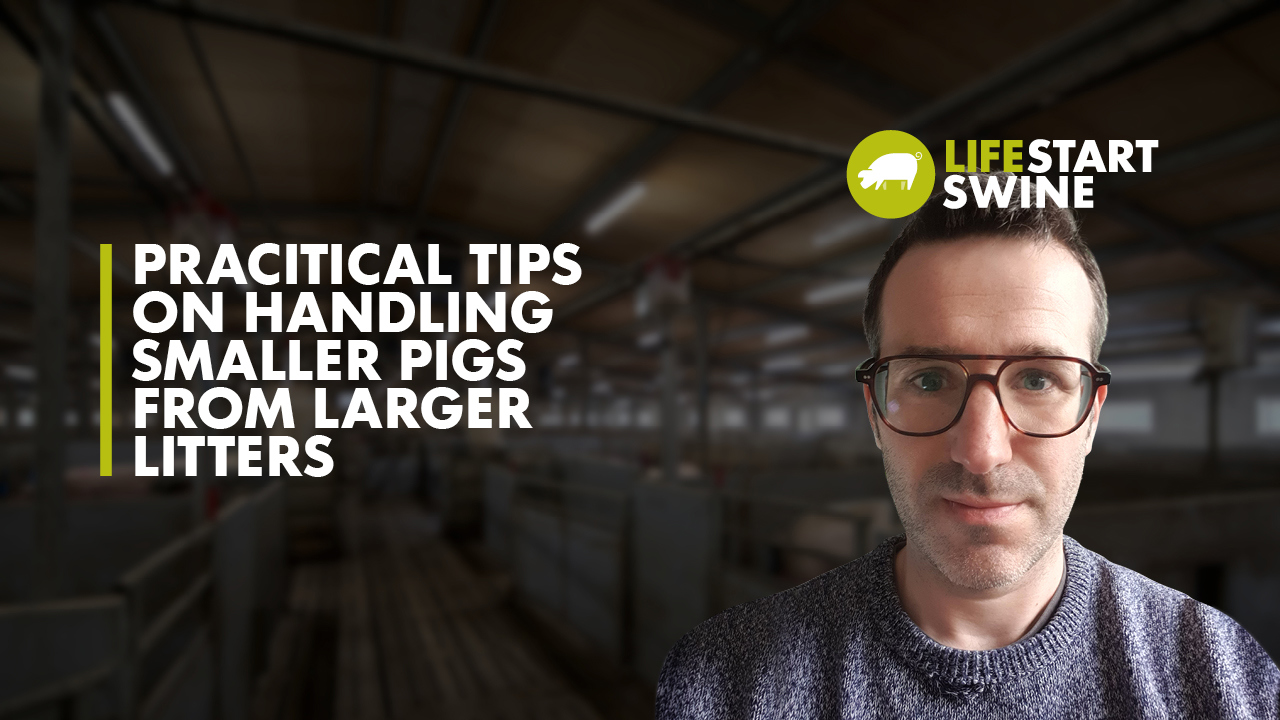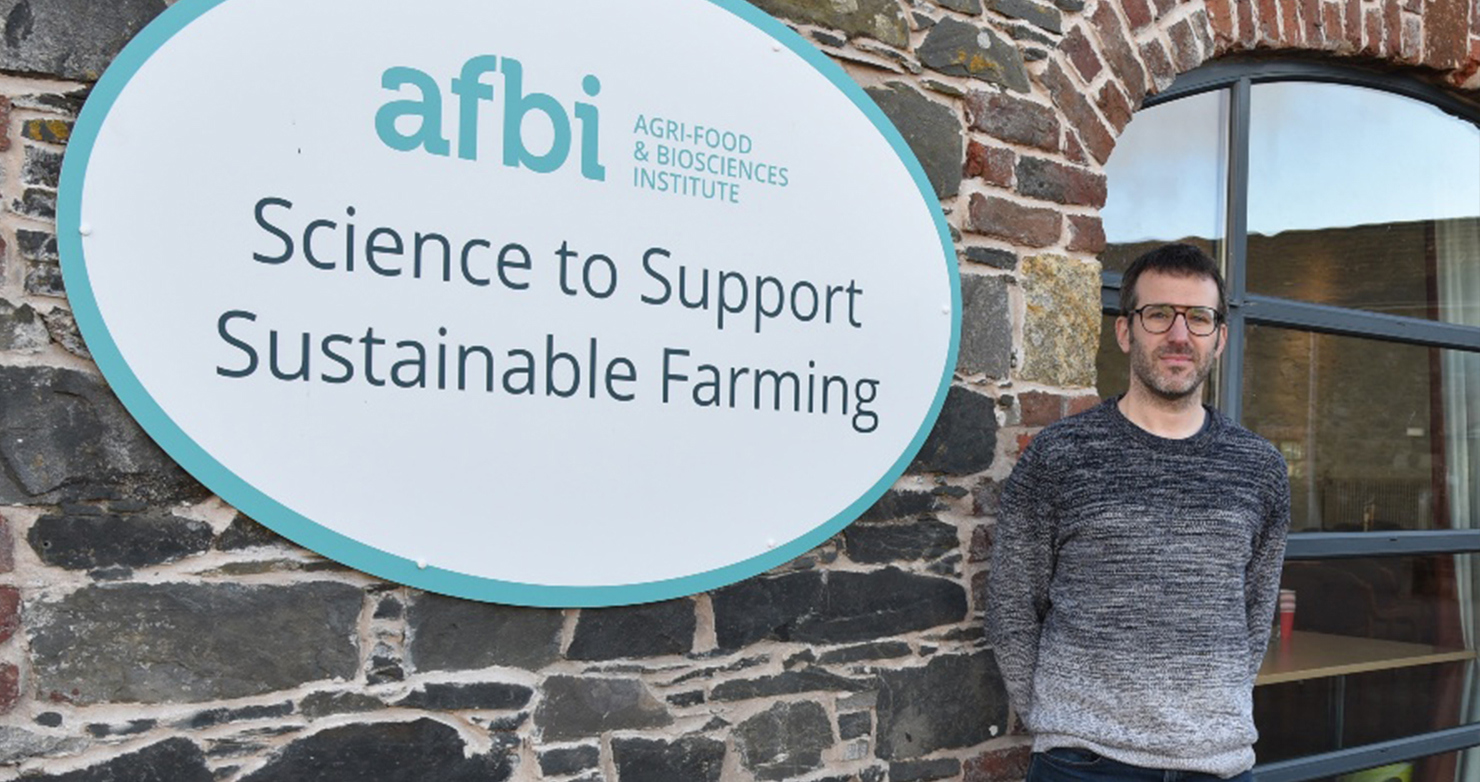
- 2023
- EARLY LIFE
With current genetics and highly prolific sows the industry has developed over the last few years, it leaves producers challenged by larger litters and more piglets born with low birth weights. Dr. Ramon Muns, Principal Scientific Officer at Agri-Food and Biosciences Institute in Northern Ireland, UK, has been conducting research to solve this issue, looking for new, innovative options for farms.

“We have found that up until recently cross fostering was a strategy that worked very well for farmers. We could play with this variability just by rearranging the litters – either by adjusting the numbers of the litters that have 14 piglets or by creating litters of smaller pigs and bigger pigs,” said Dr. Muns. “But now with even larger litter sizes, the problem is that the number of piglets we have is bigger than the number of viable teats we have in the farrowing room. You can do cross fostering, but you always end up with a surplus number of piglets, and this is when more imaginative strategies need to start to come into play.”
Recent research findings
At the Agri-Food and Biosciences Institute, Dr. Muns has conducted two studies considering this challenge of developing new strategies to help producers with more low birth weight piglets. The first study was done on a commercial farm with the initial objective of working with nursing sows. The idea was to keep the sow, that is weaned from piglets, for an extra week or more weeks just to accommodate the surplus piglets from younger batches.
“However, when we arrived at the farm, we observed that the farmer was doing a different approach – rather than keeping a nurse sow for extra weeks, which has some biosecurity risk, because you have an “older” animal that you keep on with a younger population, the farmer was moving litters forward,” he said. “In a weekly batch system, the batch of sows and litters that were 14 days into lactation – he would move up to four bigger litters (big in animal size or weight) into an artificial rearing space that he had on the farm and then feed them milk replacer, creep feed and water at a controlled temperature.”
Rather than moving the sow, the farmer moved forward a litter of seven days of age to occupy the open space with the sow 14 days into lactation. Then he was moving 24-hours old piglets forward to occupy the empty space of a sow seven days into lactation. The sow at 24 hours post-farrowing that was empty was the recipient of the surplus piglets that initially didn't have enough teats to allocate to. In each movement forward, litters with heavier or bigger piglets were selected visually.
Dr. Muns wanted to determine if this system works for the sow and piglet in terms of the piglet growth. He compared four treatments, following litters that were moved:
- 14 days of age (moved into an artificial rearing system)
- 7 days of age (moved into a sow 14 days into lactation)
- 24 hours of age (moved into a sow 7 days into lactation)
- litters that remain with their biological sow all the way through

“We followed them and what we observed was very interesting. All the litters that were moved forward were weaned at 21 days rather than at 28 days of age which is the UK legal requirement (21 days allowed in certain exceptions),” he explained. “We observed that moving litters forward to a sow didn't compromise their growth. Whereas the piglets that were moved into the artificial system saw a reduced weight at weaning. Thus, they were weaned with lower weights compared to the ones that had been moved to a sow. All of them weaned at 21 days of age. As expected, sows left with their biological sow were heavier, but they were 28 days of age at weaning.”
Even more interestingly, Dr. Muns’ team weighed the animals again post-weaning at 40 days of age (same age for all piglets), and the weight loss differences disappeared. All the piglets, irrespective if they experienced lactation with the biological sow and were weaned at 28 days of age or if they were in the artificial system and were weaned at 21 days of age or if they were moved into an “older” sow and were weaned at 21 days of age, had similar weight at 40 days.
“They catch up, which makes sense because the ones that you put into this artificial system experience kind of a partial weaning, and they go into an initial stress that the others don't suffer,” he explained. “You see the effect at 21 days when they are actually moved to the nursery. Whereas the other piglets that have been with the sow for lactation, they have to experience that stress when they are moved to the nursery. Our hypothesis is that's why we observe this compensatory growth - it was just the different moments of when the stress of weaning or partial weaning was established.”
He said it’s worth noting that this system of moving the piglets into an artificial rearing system falls into a grey area when it comes to UK and EU legislation. It’s not full weaning because the piglets are still using soy milk replacer and they are placed in a highly controlled environment, but they don’t have access to the sow (though they might be in close proximity, depending on the farm set up) so it's considered a partial weaning.
“However, moving piglets forward worked very well. In my opinion, it also prevents the biosecurity risk usually associated with traditional nurse sow systems. Ideally, in a one-week batch system, weaning a few heavy litters at 21 days of age starts the chain of movements there, rather than using an artificial rearing system at 14 days of age, which could be a better option than relying on artificial rearing. But we weren’t able to do this type of comparison in our study,” he said.
The second study was conducted on a commercial pig farm that invested in a milk system for piglets in the farrowing room. They had installed small drinkers that were continuously offering access to milk replacer, so the piglets were with the sow and had an extra supply of milk. The objective of the study was to determine how many piglets could be added to the litter through cross fostering with this extra supply of milk.
The study consisted of two groups - one with a litter of 15 piglets and another with 17 piglets per litter, assuming the sow would have 14 functioning teats. Piglets were monitored for growth and mortality, and the team reported the number of antibiotic treatments that were needed.
“Interestingly, we found that at 28 days of age, the bigger litter of 17 piglets had higher mortality. About one piglet per litter died, whereas the piglet litter of 15 had almost no mortality,” he said. “Also, the average weaning weight of the litters was similar between treatments. When we looked at the antibiotic use, it didn't differ between litters. They did need to intervene because of scours or other problems occasionally, but they intervened equally between both groups. So, we observed that if you push to 17 piglets per litter, you will lose one piglet in the process. It appears that 16 piglets is probably the ideal number. Then it's just a matter of making the economics work for the cost of the milk replacer. If these two extra piglets, going from 14 to 16, can compensate for the cost of the milk system then it would certainly be very promising.”
With more piglets being born than teats available, they can’t grow at a high rate because milk yield or production is the limiting factor for growth. The system the producer was using has an initial investment, but in terms of labor cost only a small kitchen or space to combine milk powder with hot water and mix daily is needed. Then, it's distributed automatically to all the pens in the farrowing rooms and is available on-demand.
Practical tips and take-home messages from the research
Based on the research studies presented, Dr. Muns recommends, especially on farms with a one-week batch system, moving litters forward.
“I would even prefer it to a nurse sow, but when moving litters forward, be sure you are moving the heavier, bigger litters in the sense of the size of the pigs to minimize the impact of changing environment or moving from one sow to another. It is also better to move the whole litter as they did on the farm. I would say use the bigger litters at 21 days of age, wean them together with the previous (“older”) batch, then start all the change of movement. Week-by-week, pushing one, two or three litters forward,” he said.
From the second study, the take-home message is to consider installing a milk supply system. In the farrowing pens, assuming one piglet per teat, they can increase the fostered litter up to 16 piglets without compromising welfare or survival. Dr. Muns said they also monitored the sow in terms of body condition, and adding piglets did not compromise the sow with the extra milk supply in the farrowing pen.
If you are interested in receiving a copy of the research studies, feel free to email Dr. Muns directly at Ramon.Muns@afbini.gov.uk.



